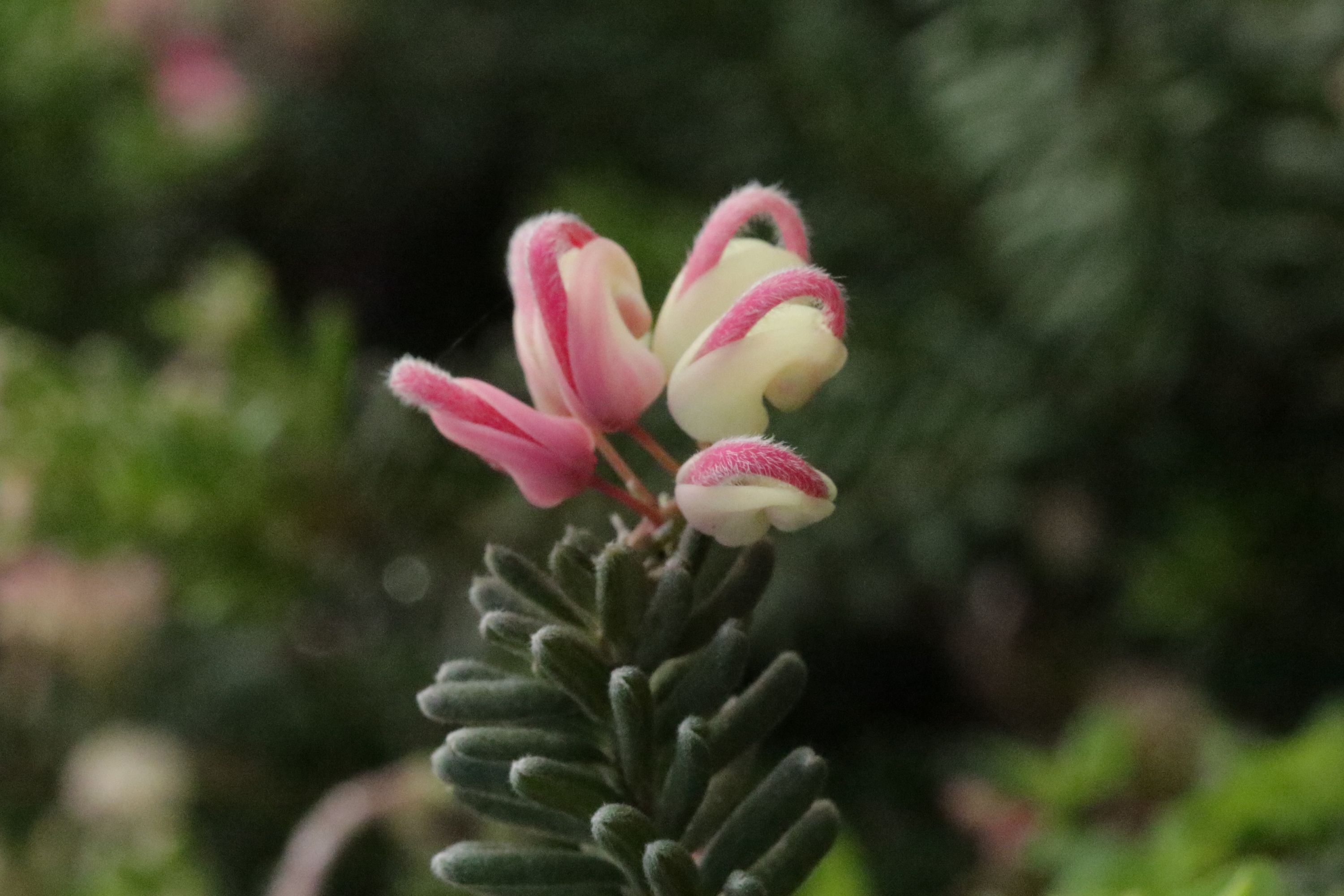Woolly grevillea
(Grevillea lanigera)

Description
Grevillea lanigera, commonly known as woolly grevillea, is a small shrub which is endemic to Victoria and New South Wales in Australia. The species shows considerable variation in its habit and other characteristics. It may be prostrate or erect, the latter forms growing from 0.3 to 1.5 metres in height. The red flowers may occur throughout the year, but are most prolific in winter and spring. It has hairy leaves and branchlets, giving rise to the specific epithet lanigera derived from the Latin words lana (wool) and ger (to bear or carry). The species was formally described in 1832 in Robert Brown's Supplementum primum prodromi florae Novae Hollandiae. Grevillea lanigera occurs in an area that extends from Wilsons Promontory in Australia northwards to the south coast of New South Wales and nearby mountain ranges. Plants in the genus Grevillea are shrubs, rarely small trees with simple or compound leaves arranged alternately along the branchlets. The flowers are zygomorphic and typically arranged in pairs along a sometimes branched raceme at the ends of branchlets. The flowers are bisexual, usually with four tepals in a single whorl. There are four stamens and the gynoecium has a single carpel. The fruit is a thin-walled follicle that splits down only one side, releasing one or two seeds before the next growing season. The genus Grevillea was first formally described in 1809 by Joseph Knight from an unpublished manuscript by Robert Brown. Knight gave the spelling Grevillia, corrected by Brown in 1810 to Grevillea in Transactions of the Linnean Society of London. The genus was named in honour of Charles Francis Greville, an 18th-century patron of botany and co-founder of the Royal Horticultural Society. Grevilleas grow in most habitats, although few grow in alpine areas, in swamps or saline soils. Most species are endemic to Australia but three species grow in New Guinea, (G. papuana is endemic), three are endemic to New Caledonia and one species (G. elbertii) is endemic to Sulawesi in Indonesia. Grevilleas are good bird-attracting plants. Honeyeaters in particular are common visitors. They are also used as food plants by the larvae of some Lepidoptera species, including the dryandra moth and Pieris rapae (small white).
Taxonomic tree:







